At a junction in southern Israel close to the Gaza border, groups of parents are cooking food for dozens of soldiers gathered here ahead of Israel’s imminent invasion of Gaza. It’s a celebratory scene. Smiling faces. Young soldiers slapping each other on the back. You know from their uniforms that they will be going to war, against a skilled and savage enemy, but not from their expressions.
Driving from that junction toward Kibbutz Be’eri, I hear IDF Col. Golan Vach being interviewed on the radio. Vach, who heads the army’s National Rescue Unit, which dashes to save lives in disasters worldwide, is describing some of the challenges he’s encountered in this tragedy, including removing 120 bodies from a bonfire constructed by Hamas of its victims at the Supernova outdoor music festival, where over 260 people were massacred. Vach and his team pulled the bodies from the pyre, he explained as calmly as he could, so they would not be consumed beyond the possibility of identification.
At Be’eri, where a sizable number of the 2,000-plus terrorists headed in pickup trucks and on motorbikes after bursting through the border nine days ago, the bodies of the 103 residents slaughtered here have been removed. So, too, the bodies of those in uniform who fell in the kibbutz’s defense. And the bodies of over 100 terrorists.
A group of newspaper editors are being shown around by a group of officers — some of whom fought here, and others who fought elsewhere in the large swath of southern Israel where the Gaza killers seized temporary control to unprecedentedly terrible effect.
The scenes of devastation at this kibbutz have become bitterly familiar in the last few days. The homes where families were killed en masse, bound and burned and mutilated. The white pickup trucks on which some of the terrorists drove in. The impossible contrast between this pastoral community — with its surrounding fields of agriculture and the sign near the gate giving directions to Be’eri’s “Tourist Sites” — and the yellow gate itself, entryway to murder, burned and battered where waves of killers from Gaza forced their way in.
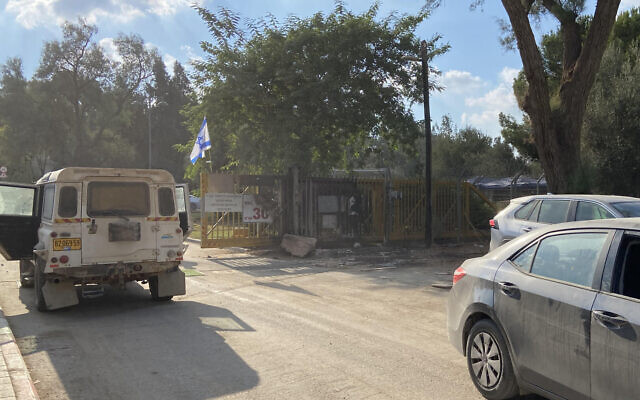
The fighting in the wider area raged for 50 hours — until the last of the terrorists was dealt with, and the threats to the Gaza-envelope area’s residents were deemed over. By then, a tenth of this kibbutz’s population was dead.
A failure to comprehend the nature of the enemy
What’s underlined by what we hear on our visit is the courage against impossible odds displayed by Israel’s fighting forces, here and everywhere that Hamas targeted in 22 communities, the Supernova party and something like a dozen IDF bases and posts — heroism by soldiers, police officers, the local civil defense squads, and ordinary civilians. At Kibbutz Nirim, further south, the civil defense squad, led by an officer named Amit Levy, is credited with repelling dozens of terrorists and saving many, many lives on the kibbutz.
Despite the suicide bombings, summer camps training young kids to kill, and the bloodthirsty rhetoric, there was, in our army, a failure to comprehend that Hamas simply wants to kill Jews, and that its evolution into an increasingly effective and disciplined fighting force would do nothing to make it any less savage
But what also emerges from our visit was that there was a belief inside the IDF that Hamas’s increasing professionalism would one day mean a harder struggle for the army, not that the terror group’s improved killing skills would continue to be primarily directed against civilians. Despite the suicide bombings, summer camps training young kids to kill, and the bloodthirsty rhetoric, there was, in our army, a failure to comprehend that Hamas simply wants to kill Jews, and that its evolution into an increasingly effective and disciplined fighting force would do nothing to make it any less savage. (This, of course, parallels the political and security leadership’s assessment that Hamas could and had been deterred, that it could be bought off with the permitted influxes of Qatari money, and that it was interested in governance rather than slaughter.)
Indeed, that was one of the key details that emerged from our horror tour of Be’eri — that the waves of Hamas gunmen had been organized on October 7 to kill as many civilians as possible, by any and every means. That required gunning down the armed forces, and they did a great deal of that too. But the prime targets were the civilians.
Hamas set up its invading forces to enable squads of murderers to rapidly reach the homes at the kibbutzim and other communities, while other terrorists were dealing with the limited armed forces deployed in the area and organizing to intercept further Israeli forces as they rushed to the rescue. The rescuers found Hamas in control of roads, deployed at entrances to communities — immensely complicating the ensuing battles to save the civilians.
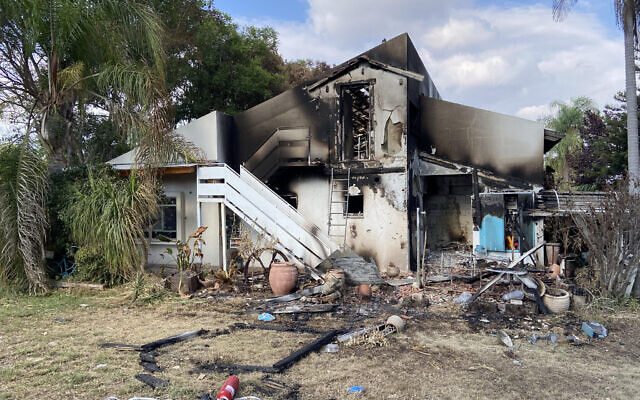
We stood outside a house in which eight children were found bound together and dead; an adult couple was killed there, too. We saw another home where 26 terrorists had hidden out, hoping to emerge later and continue the slaughter. The terrorists came to just about every home in this kibbutz, killing everyone they could.
Those who fought in this area quickly noticed car after Israeli car with the trunk open, the contents strewn on the ground, and the spare tire missing. At first, they thought the vehicles had been looted. But why take only the tires? And then they realized this was part of the Hamas planning — taking the tires to help set fire to the homes where many residents were trying to protect themselves in their saferooms, and either to burn them alive inside or to shoot them when they were forced out by the flames and the smoke.
The IDF had drilled for potential infiltrations in which a small number of troops might be targeted, or even for several simultaneous attacks on soldiers. But officers had been assured from on high that, broadly speaking, Hamas was deterred from wider attacks and that in any case the sophisticated border fence was an effective defense. And, of course, it was Shabbat, so perhaps half of those soldiers who would have been deployed on a weekday were not.
Even so, there is a belief that even an hour’s advance warning of the scale of the attack might have enabled the IDF to repel it. But there was no warning. The initial onslaught, through so many sections of the blown-up fence, meant the surprised army was playing catch-up with impaired communications, waves of gunmen pouring in, and a porous border. And the Air Force, though it could and did begin to target the gunmen at the border, could not use its capabilities effectively inside Israel, where the terrorists, the IDF and civilians were in close proximity, for fear of killing our own people. (Update, October 18: Many of the terrorists, I neglected to mention when I first published this piece, had donned army and army-style uniforms, to make the task of the IDF troops still more confusing and dangerous.)
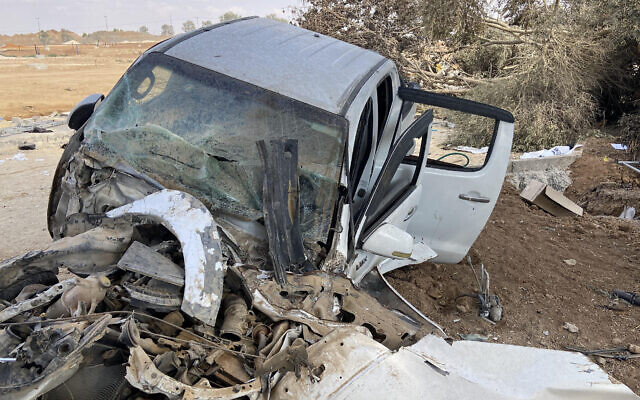
Troops fought with incredible bravery, but they take no comfort in that. They feel that they failed personally, when they clearly did not. They have now succeeded in clearing the terrorists from the Gaza envelope communities — though they cannot promise that gunmen have not still managed to evade their searches somewhere. And they are now awaiting their orders to fight back.
Fighting for the free world
As I began the drive back from the border toward Jerusalem, Israel’s politicians were making speeches in the Knesset, interrupted by alerts signaling rocket attacks on the capital and much of the country — Hamas and its terrorist allies seeking to humiliate Israel.
President Isaac Herzog was declaring: “We are not alone in this war. We are fighting the war as part of the family of nations – of all those who seek justice, peace and freedom – against an enemy that has proven that humanity and humanism are its enemy.”
Well, I hope the family of nations recognizes this, and recognizes Iran’s orchestrating hand and the danger its rapacious agenda poses for the free world.
The United States plainly does. The administration has been as engaged as it could possibly be, with President Joe Biden heading our way — flying into a war zone — and Secretary of State Antony Blinken sitting in for hours at Monday’s war cabinet meeting.
In his extensive shuttling through the region, however, Blinken extracted no condemnation of Hamas from Israel’s peace partners in Egypt, Jordan or Morocco, where the leaders’ fears of “the street” are high, and there is a rising tide of hostility to Israel and to Jews on the streets of some of Europe’s enlightened nations.
Opposition leader Yair Lapid did not sound certain that the “family of nations” is firmly with us. He proclaimed that Israel was about to “uproot Hamas” because “it is impossible to live next to a terror group… It will take time, it will require the use of a lot of force. If the world doesn’t like it, let it not. It was not the children of the world who were murdered, our children were murdered.”
Meanwhile, Prime Minister Benjamin Netanyahu, promising a “crushing victory,” was calling Hamas a “new iteration of the Nazis.”
Some in the IDF, indeed, describe the Hamas gunmen who came to kill our people as Einsatzgruppen.
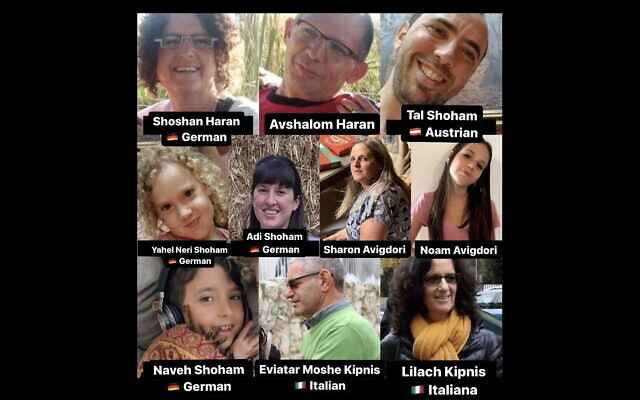
Nothing here will be the same
This short piece does not begin to adequately describe the horrors that befell those who were killed and tortured and abducted and injured last week, or the traumas of their loved ones, or the impact on the whole State of Israel. Nothing here will be the same.
But one imperative on the route back from the hell into which we have been plunged is that our people maintain the resilience most have found in recent days, the determination to overcome.
Another is that our leaders muster the strategic and tactical wisdom to ensure, in the coming deepened conflict, that those motivated soldiers now gathered around Gaza are properly directed, with no more delusions about the enemy they are fighting. Hamas, as I’ve written before, will be on home ground, and believes it is luring Israel into a death trap. It will have known that Israel will enter Gaza after October 7, and it may well know more about Israel’s capabilities and plans having overrun IDF bases that black day.
In that regard, Blinken’s extensive direct involvement in our war planning marks a precedent that either underlines US support, signals we need more help than ever before from the US right now, or suggests that the US doesn’t entirely trust us to manage this crisis effectively. Or perhaps all three.
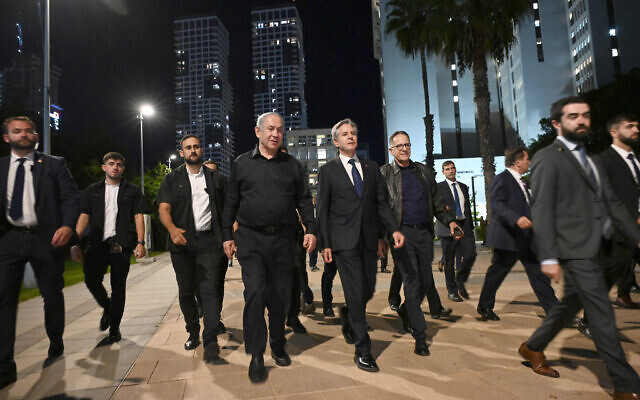
We have a mighty, highly motivated army.
And it faces enemies who have lost any shred of humanity, must not again be underestimated, must themselves be surprised by us this time, must be vanquished.
Once Hamas can no longer threaten Israel, needless to say, nothing like this can be allowed to happen again. But, for now, there is a war to be won.

